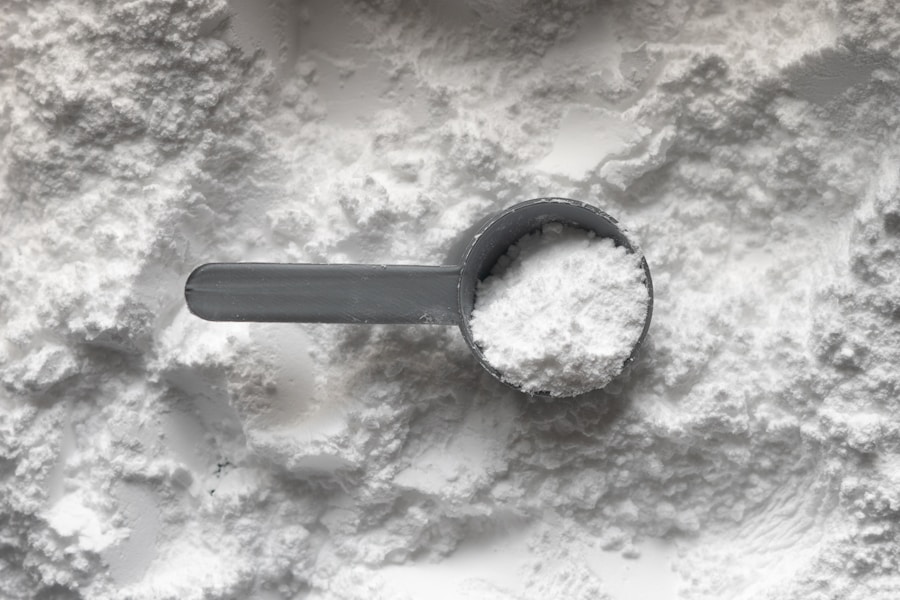Muscle-building supplements are products designed to enhance muscle growth, improve athletic performance, and aid in recovery after intense workouts. These supplements are often used by athletes, bodybuilders, and fitness enthusiasts to help them achieve their fitness goals. They come in various forms, including powders, pills, and liquids, and are typically made from a combination of vitamins, minerals, amino acids, and other natural or synthetic ingredients. While some muscle-building supplements are backed by scientific research and proven to be effective, others may not have the same level of evidence supporting their claims. It's important to understand the different types of muscle-building supplements and how they work before incorporating them into your fitness routine.
Muscle-building supplements work in a variety of ways to support muscle growth and performance. Some supplements, such as protein powders and amino acids, provide the building blocks necessary for muscle repair and growth. Others, like creatine and beta-alanine, help improve strength and endurance during workouts. Additionally, some supplements contain ingredients that can enhance nutrient delivery to muscles, reduce muscle breakdown, and support overall recovery. It's important to note that while these supplements can be beneficial when used correctly, they are not a substitute for a healthy diet and regular exercise. It's essential to use muscle-building supplements as part of a comprehensive fitness plan to maximize their effectiveness.
Types of Muscle-Building Supplements
There are several different types of muscle-building supplements available on the market, each with its own unique set of benefits and mechanisms of action. Protein powders are one of the most popular types of muscle-building supplements and are often used to support muscle growth and repair. They come in various forms, including whey, casein, and plant-based proteins, and can be easily added to shakes, smoothies, or baked goods. Amino acids are another essential type of muscle-building supplement, as they are the building blocks of protein and play a crucial role in muscle synthesis. Branched-chain amino acids (BCAAs) are particularly popular among athletes and bodybuilders for their ability to support muscle recovery and reduce muscle soreness.
Creatine is another widely used muscle-building supplement that has been extensively researched for its ability to improve strength and power during high-intensity exercise. It works by increasing the body's stores of phosphocreatine, a compound that helps produce adenosine triphosphate (ATP), the primary source of energy for muscle contractions. Beta-alanine is another supplement that has gained popularity for its ability to increase muscle carnosine levels, which can help buffer lactic acid buildup during intense workouts. Other types of muscle-building supplements include nitric oxide boosters, which help improve blood flow to muscles, and testosterone boosters, which may support muscle growth and recovery.
Choosing the Right Muscle-Building Supplement for Your Goals
When choosing a muscle-building supplement, it's essential to consider your specific fitness goals and individual needs. For example, if your primary goal is to increase muscle mass and strength, you may benefit from using a protein powder or creatine supplement. On the other hand, if you're looking to improve endurance and reduce fatigue during workouts, a beta-alanine or BCAA supplement may be more suitable for your needs. It's also important to consider any dietary restrictions or allergies you may have when selecting a muscle-building supplement. For example, if you follow a plant-based diet or have lactose intolerance, you may want to opt for a plant-based protein powder or lactose-free whey protein.
Additionally, it's crucial to research the scientific evidence supporting the effectiveness of a particular supplement before making a purchase. Look for products that have been tested in well-designed clinical trials and have demonstrated positive results in terms of muscle growth, strength, or performance. It's also a good idea to consult with a healthcare professional or certified nutritionist before starting any new supplement regimen, especially if you have any underlying health conditions or are taking medications that may interact with the supplement. By taking the time to carefully consider your goals and individual needs, you can choose the right muscle-building supplement to support your fitness journey.
How to Incorporate Muscle-Building Supplements into Your Fitness Routine
Once you've chosen the right muscle-building supplement for your goals, it's important to incorporate it into your fitness routine in a way that maximizes its benefits. For example, if you're using a protein powder to support muscle growth and recovery, consider consuming it within 30 minutes of completing a workout when your muscles are most receptive to nutrient uptake. You can mix the protein powder with water or milk for a quick post-workout shake or add it to oatmeal or yogurt for a convenient snack. If you're using a creatine supplement to improve strength and power during workouts, consider taking it before or after your training sessions to help maximize its effects.
It's also important to follow the recommended dosage guidelines provided by the supplement manufacturer to ensure safety and effectiveness. Taking more than the recommended dose of certain supplements, such as creatine or beta-alanine, may not provide additional benefits and could potentially lead to adverse effects. Additionally, it's important to stay consistent with your supplement regimen and give it time to work. Muscle-building supplements are not magic pills, and it may take several weeks or even months of consistent use before you start noticing significant changes in muscle growth or performance. By incorporating your chosen muscle-building supplement into your fitness routine in a strategic and consistent manner, you can optimize its potential benefits.
Potential Risks and Side Effects of Muscle-Building Supplements
While many muscle-building supplements are generally safe when used as directed, it's important to be aware of potential risks and side effects associated with their use. For example, some individuals may experience digestive issues such as bloating, gas, or diarrhea when using certain protein powders or amino acid supplements. This can often be mitigated by choosing high-quality products and consuming them with plenty of water or other fluids. Creatine supplementation has been associated with mild side effects such as stomach cramping and dehydration in some individuals, particularly when high doses are consumed or when not enough water is consumed alongside it.
It's also important to be cautious when using certain types of muscle-building supplements if you have underlying health conditions or are taking medications that may interact with them. For example, individuals with kidney disease should use creatine supplements with caution, as they may put additional strain on the kidneys. Additionally, some testosterone-boosting supplements may have potential risks for individuals with hormone-sensitive conditions such as prostate cancer or breast cancer. It's crucial to consult with a healthcare professional before starting any new supplement regimen if you have any concerns about potential risks or side effects.
Tips for Maximizing the Benefits of Muscle-Building Supplements
To maximize the benefits of muscle-building supplements, it's important to use them in conjunction with a well-rounded fitness plan that includes regular exercise and a balanced diet. While supplements can help support muscle growth and performance, they are not a substitute for healthy lifestyle habits. Focus on consuming a variety of nutrient-dense foods such as lean proteins, whole grains, fruits, vegetables, and healthy fats to provide your body with the essential nutrients it needs for optimal muscle function and recovery.
Additionally, staying hydrated is crucial for maximizing the benefits of muscle-building supplements. Many supplements work by increasing water retention in muscles or supporting cellular hydration, so it's important to drink plenty of fluids throughout the day. Aim to consume at least 8-10 glasses of water daily, more if you're engaging in intense physical activity or live in a hot climate. Finally, getting enough rest and recovery is essential for allowing your muscles to repair and grow after intense workouts. Aim for 7-9 hours of quality sleep each night and consider incorporating rest days into your training schedule to prevent overtraining and support overall recovery.
The Future of Muscle-Building Supplements: What to Look Out For
As research in sports nutrition and exercise science continues to advance, we can expect to see new innovations in the field of muscle-building supplements in the future. One area of interest is personalized nutrition and supplementation plans tailored to an individual's unique genetic makeup, lifestyle factors, and fitness goals. With advancements in genetic testing and personalized medicine, we may see a shift towards more targeted approaches to supplementation that take into account an individual's specific nutrient needs and metabolic responses.
Additionally, we can expect continued research into novel ingredients and formulations that may offer new benefits for muscle growth and performance. For example, there is growing interest in natural compounds such as epicatechin found in dark chocolate that may have potential benefits for muscle function and recovery. We may also see advancements in delivery systems for supplements that improve their bioavailability and absorption in the body, such as nanoemulsions or liposomal encapsulation.
Overall, the future of muscle-building supplements looks promising as researchers continue to explore new avenues for enhancing athletic performance and supporting overall health. As always, it's important to stay informed about the latest developments in sports nutrition and exercise science and consult with qualified professionals when considering new supplementation strategies. By staying educated and open-minded about emerging trends in muscle-building supplements, you can make informed choices that support your fitness goals and overall well-being.










